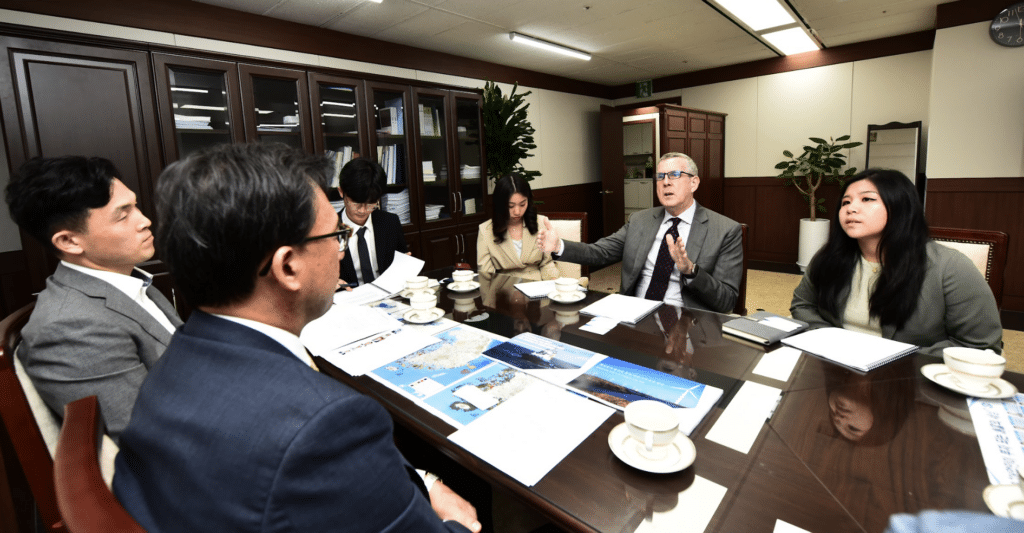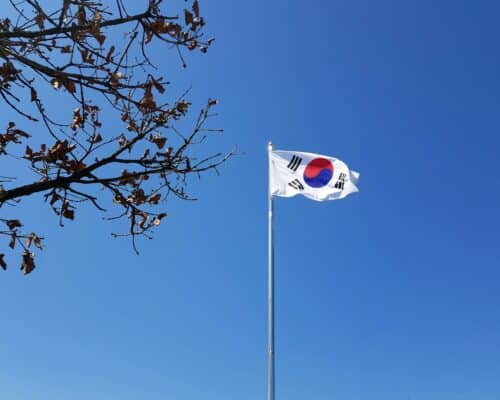Offshore Wind Offers South Korea Huge Economic Opportunities: GWEC
24 June 2024 – by Viktor Tachev
South Korea aims to install 14.3 GW offshore wind power capacity by 2030. According to the How Offshore Wind Development Can Support Coastal Regeneration: Global Overview and Best Practices for South Korea report by the Global Wind Energy Council (GWEC), succeeding in this mission will revitalise local coastal communities, introduce over 770,000 job opportunities, and unlock 87 trillion won (USD 63 billion) in investments for the economy over seven years. GWEC, the international trade association for the wind power industry, represents 1,500 companies, organisations and institutions in over 80 countries. It notes that offshore wind can be instrumental in meeting South Korea’s net-zero goal while also accelerating the economic growth of strategic coastal cities such as Incheon, Gunsan and Mokpo. GWEC’s report serves as a call to action, urging South Korean policy-makers to address key concerns, such as permitting and offering guidance on building support for offshore wind in local communities.
Energy Tracker Asia sat down with Mark Hutchinson, director and chair of the Southeast Asia Task Force at GWEC, to discuss the challenges and opportunities facing South Korea and its offshore wind-led decarbonisation journey.
Q: South Korea has just 150 MW in installed capacity and targets 14.3 GW for offshore wind by 2030. Do you consider achieving the target possible, and what would be the key challenges?
Mark: South Korea has very ambitious targets to decarbonise its economy, including the 14.3 GW target for offshore by 2030. However, to ensure the smooth rollout of offshore wind development, the lengthy permitting processes, which typically take up to 10 years, need to be streamlined, and local acceptance for offshore wind improved through education and early stakeholder engagement.
Given some recent legislative delays in passing the Offshore Wind Power Promotion Act, achieving the 2030 targets now seems unlikely. Still, the government has made significant commitments to move offshore wind forward.
Q: The report shows South Korean coastal cities struggle with declining populations, low birth rates and internal migration. How do you expect accelerated offshore wind development to affect those trends?
Mark: Offshore wind construction, operations and maintenance, as well as necessary port infrastructure development, will bring much-needed jobs to provincial areas and, with that, economic development.
The job opportunities available are not limited to the short term. For example, developing a 500 MW offshore wind farm requires approximately 2.1 million direct person days, alongside numerous indirect and induced jobs.
When there are up to 770,000 jobs locally across the value chain and at different skill levels – from marine engineers and factory workers to business managers, health and safety specialists, and low-and medium-skilled roles such as catering staff, cleaners, and security personnel – people do not have to move to the cities to find greater economic opportunities. Of course, this assumes that 14.3 GW of offshore wind will be built by 2030, which aligns with government targets. If delayed, jobs and economic development will also be delayed.
Local communities can also benefit from workforce development through the upcoming upskilling and training programs to support offshore wind development.
In addition, scaling up port infrastructure can significantly boost coastal economies and create long-term export, tourism, and other opportunities in those regions.
Q: There is always the question of the availability of a skilled workforce for the clean energy transition. Considering the magnitude at which South Korea will have to build wind farms, do you think this is a problem, and what is the best way to overcome it?
Mark: Many countries face workforce issues. GWEC always supports workforce development through technical training programs (e.g. for those doing the maintenance of wind farms) and university research and development (to create a highly skilled labour force), among other activities to build, upskill and transition the workforce.
At the same time, ensuring a just energy transition is crucial as countries pursue their net-zero goals. Recognising the importance of workforce training, GWEC will dedicate day three of our upcoming APAC Wind Energy Summit 2024 in Incheon, South Korea, in November 2024 to this issue, as wind energy has a huge potential to revitalise local communities through job creation.
Q. The report thoroughly analyses the substantial economic benefits of the offshore wind power capacity build-up in South Korea in terms of investments and job opportunities. But what about the costs? Do you expect any hurdles in the way of unlocking the needed financing?
Mark: South Korea has highly sophisticated capital markets, and we expect much of the financing to come from domestic resources, supplemented by international bank lending.
In light of rising project costs globally, we recognise the need to mobilise investor interest and maintain a competitive level of profitability in the renewables sector. This is also an important topic that will be discussed with renewable energy finance experts, developers and the supply chain industry at the clean energy finance event, which will run alongside the APAC Wind Energy Summit in South Korea this November.
Q. South Korea’s energy mix in 2030 and 2036 will still have coal and LNG play a prominent role while also having ambitious plans for ammonia co-firing. What impact do you expect this to have on South Korea’s economy compared to a scenario where wind power dominates?
Mark: Offshore wind is a domestic resource and, once constructed, is minimally impacted by international commodity prices. As such, offshore wind increases energy security, while gas and coal, which must be imported and are subject to severe price volatility, do not. The initial wind power projects will have higher costs, but as evident in many other countries, once 2-3 GW of offshore wind goes live, the price drops dramatically, and it becomes grid-competitive.

Q. Considering the significantly lower LCOE of onshore wind compared to offshore wind, do you expect the former to play a prominent role in South Korea’s energy future?
Mark: Onshore wind and solar have a significant role in South Korea’s energy future. However, scalability is a challenge because of the limited land available for development. On the other hand, South Korea has the technical potential for 624 GW of offshore wind capacity, which is why the government sees it as one of the keys to the economy’s decarbonisation.
Q. What about the development time frame of offshore wind projects? Do you consider it a hurdle in South Korea’s decarbonisation journey?
Mark: The timeline for offshore wind from initiation to commercial online date is six to eight years, while GWEC understands that nuclear plants in Korea take longer than that. In that sense, offshore wind should be the priority if Korea is to meet its decarbonisation goals.
Q. Other developed countries like Denmark and the UK have already made leaps with offshore wind power. Why do you think South Korea is stalling, and do you see a realistic scenario where the country catches up and becomes one of the global success stories?
Mark: GWEC is very confident that South Korea will be an offshore wind global success story in a few years. The recent offshore wind “Special Act” did not pass in the recent lame-duck legislative session and so we will have to wait for the 22nd National Assembly in June for the act to be re-proposed. Paired with its subsidiary legislation, this process will likely take at least another year, given typical Korean legislative timelines.
Q. To conclude, let’s look at the broader picture. Given their potential, what role do you expect offshore wind to play in the energy future of South and Southeast Asia?
Mark: South and Southeast Asia have no choice but to pursue offshore wind – where there is potential. That is because these economies are growing rapidly and need new power plants to meet the growth. Coal is almost impossible to build now, and gas is getting harder due to concerns that in 10-15 years, the gas plants will become stranded assets. Vietnam and the Philippines have excellent offshore wind resources, as do India and Sri Lanka, for example.
GWEC’s report underscores the strategic importance of offshore wind development for South Korea, advocating for a collaborative approach involving local and national governments and industry stakeholders. It emphasizes enhancing local workforce capabilities, expanding international networks, and standardizing community engagement. The report aims to provide stakeholders with evidence of the industry’s potential to revitalize local economies through job opportunities and infrastructure investments. The report is accompanied by the Exploring Coexistence Opportunities for Offshore Wind and Fisheries in South Korea’ Report – a dedicated analysis building on successful global case studies to provide a pathway ensuring that the offshore wind and fisheries industries can coexist and thrive together.
by Viktor Tachev
Viktor has years of experience in financial markets and energy finance, working as a marketing consultant and content creator for leading institutions, NGOs, and tech startups. He is a regular contributor to knowledge hubs and magazines, tackling the latest trends in sustainability and green energy.
Read more








